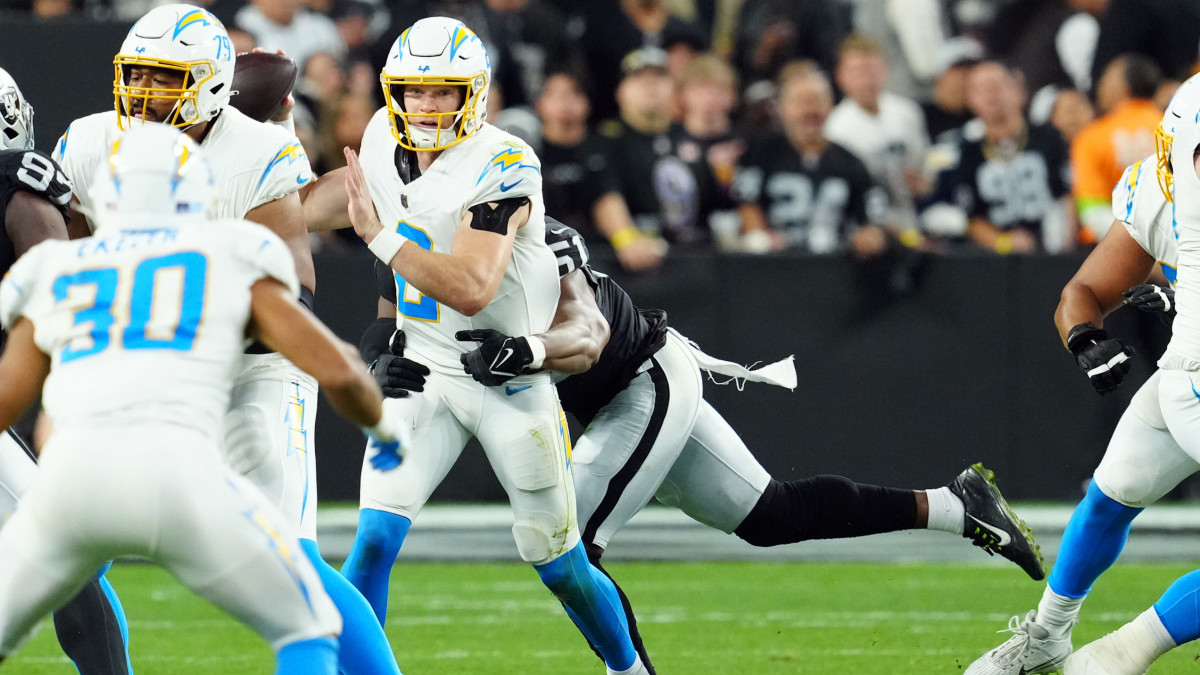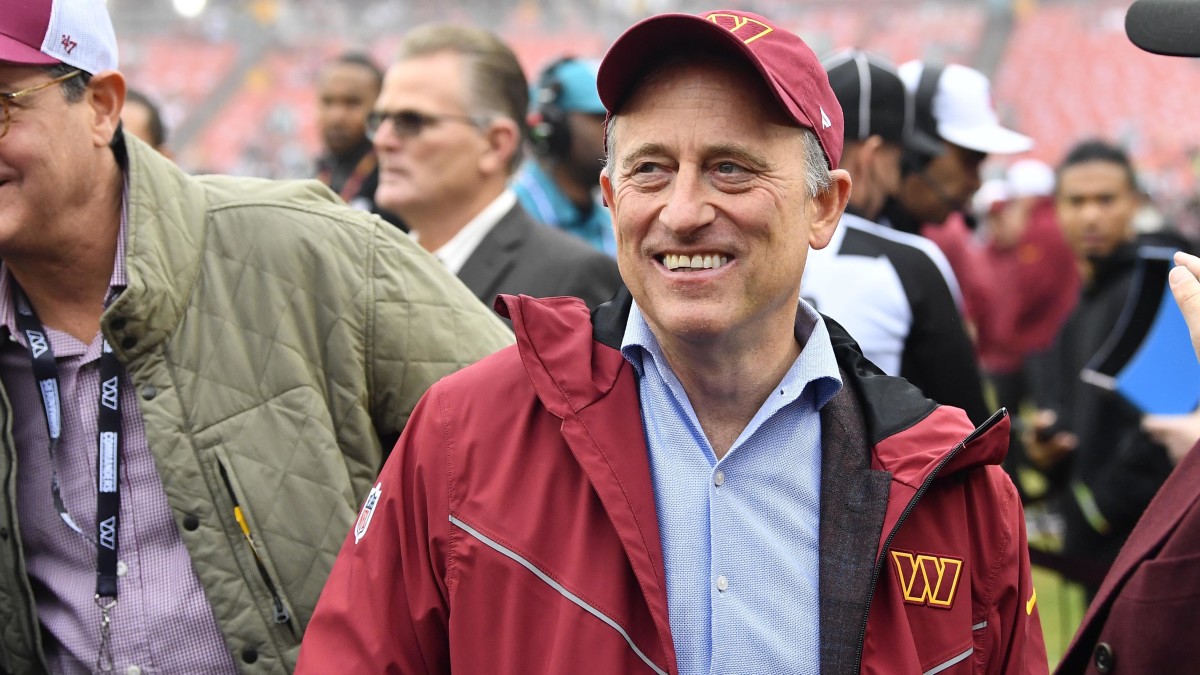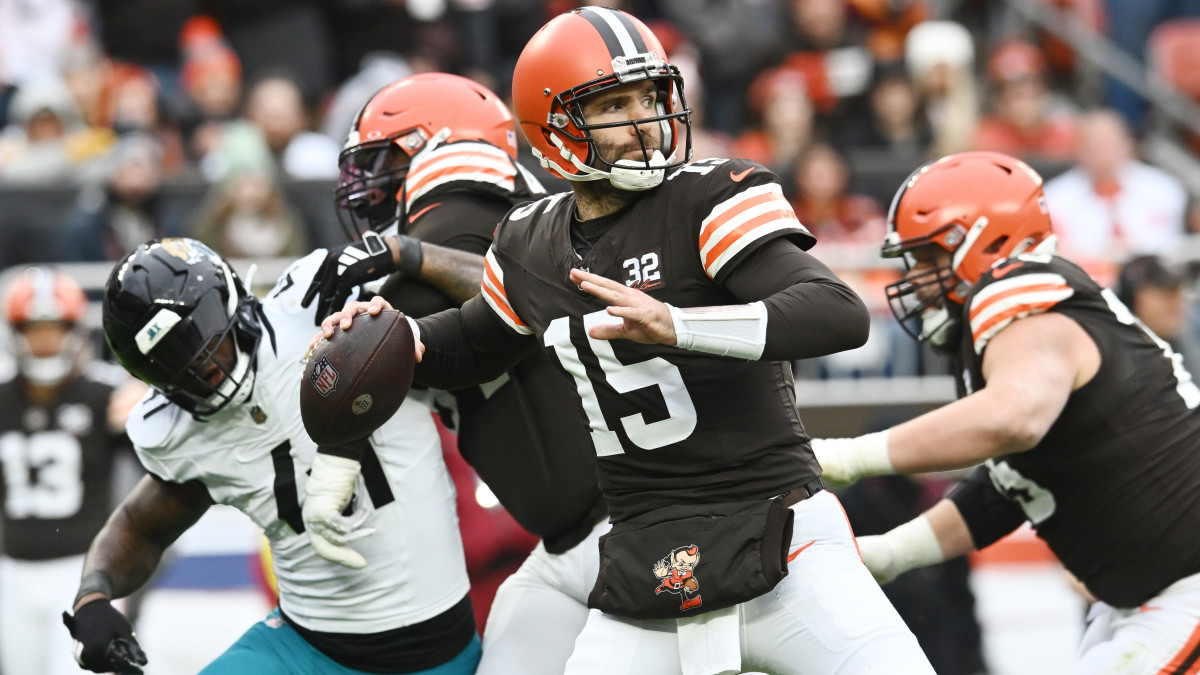The Chargers Need to Swing for the Fences After Brandon Staley Firing

We’re into the season’s final month, and that means we get games on Saturday now—three of them—plus a full slate Sunday and an intriguing Monday nighter. Ahead of all that, here’s what we’ve got …
• Thursday night sealed it, and now that the curtain has dropped on the Brandon Staley era, what’s next for a long-underachieving Chargers franchise should be clear.
This is not the time for an experiment or a roll of the dice. The Chargers have tried that and, again and again, come up short. This will be the 11th time in 14 seasons they’ve missed the playoffs. Over that time, they’ve hired three head coaches, and all three were first-timers, and each made the playoffs just once. So it’s time to do what the franchise did before that, in hiring Norv Turner and Marty Schottenheimer, and find a more experienced hand.
But more than just that, it’s time for the Chargers to swing for the fences, which means it’s time for the Spanos family to invest in getting it right. Maybe that means luring Jim Harbaugh, who played his final two NFL seasons as a Chargers quarterback, from Michigan. Maybe it means trying to entice Bill Belichick across the country. Maybe it means prying Dan Quinn from the Cowboys, as reluctant as Quinn’s been to bolt.

Whoever it is, the reason to get an experienced headliner is about a whole lot more than trying to be relevant in a sports market where relevance isn’t automatic for teams (though that’s a bonus).
It’s about the makeup of the roster. The Chargers need someone who’ll come in and be able to command a starry locker room, and quickly get the most out of it—because while the window for those players isn’t closing, it won’t be open forever. At the start of next season, Corey Linsley will be 33, Keenan Allen will be 32, Joey Bosa will be 29, Mike Williams will be 29 and Derwin James will be 28, and all five have significant injury history. Khalil Mack, who may or may not be back, will be 33. Austin Ekeler is turning 29 and is a free agent.
The Chargers need someone with skins on the wall to sort through big decisions on those players—decisions that only get trickier with Justin Herbert now off his rookie contract and onto a market-topping deal—and work to get the most from those who are sticking around in 2024. It’s on the Spanoses now to find a way to get the most out of what that core of players—a core that’s now gone five straight seasons without a playoff win—has left.
The franchise certainly hasn’t maximized that core yet. Going and getting a Harbaugh or a Belichick or a Quinn, at least as I see it, gives them the best chance at fixing that.
• Why has the hip-drop tackle suddenly become such a problem in the NFL?
It’s a fair question—and I think we’ve got the answer for you.
About a decade ago, rugby-style tackling, or hawk tackling (nicknamed after the Seahawks, since Pete Carroll’s staff was an early adopter and promoter of the technique), started to become more prominent at all levels of football. The intention was to get the head out of tackling, by teaching players to wrap and roll opponents to the ground, rather than old-school form tackle them. And to a large degree, it’s worked to minimize head impact on players.
But as is the case with a lot of these things, there are unintended consequences, and for some time now, I’ve felt like the hip-drop tackle was one of them.
This week, NFL vice president of football operations Troy Vincent and his crew said at the league’s winter meeting that the time is now to eliminate the hip-drop tackle from the game. The trouble in banning it, until now, has been finding a way to define it and separate it from the well-intentioned rugby tackling that’s become more prevalent. And in doing so, the league actually indirectly confirmed the theory that rugby tackling is the culprit.
This video on YouTube is where Vincent’s group found the answer to their problem.
It was produced by Australia’s National Rugby League to explain what exactly a hip-drop tackle is, detailing the three elements of the tackle they were banning. Those three …
1) Grip—The defending player has a grip on the attacking player (one hand or two).
2) Rotate—The defending player uses that grip and swings or rotates their body to a position behind or to the side of the ballcarrier.
3) Drop—The defending player then drops their body weight directly onto the opposing player’s legs (as opposed to their body weight landing on the ground first to absorb most of the impact).
Vincent, in the NFL’s press conference, actually used those exact three words to describe how the league would define it. And in doing so, ban a dangerous play without ridding the game of the positive impacts of the roots from which it came.

• We’re all learning on the fly about Commanders owner Josh Harris, who was accompanied by one of his limited partners, Mitchell Rales, at this week’s league meetings in Dallas. And one thing I learned down in Texas over the last few days could at least color how the next couple of months go with the new owners and their team—Harris likes how the Commanders’ beltway rivals from Baltimore do business.
It was apparent, too, in his first real football hire.
Seven weeks ago, Washington brought Eugene Shen aboard as its new senior vice president of football strategy, poaching him back from the world of finance, a world to which he’d returned in 2022 after serving as the Jaguars’ vice president of football analytics, and the Dolphins’ director of analytics between ’19 and ’22. For five years before that, Shen cut his NFL teeth helping to run analytics for the always innovative, always forward-thinking Ravens, who have gone so far as to build their own proprietary analytics systems.
That the hire was made before Harris made decisions on the futures of GM Martin Mayhew, top football exec Marty Hurney or coach Ron Rivera is notable for a couple of reasons. First, it’s an indication of how he sees the role—as one that would be there regardless of who the GM or head coach was. Second, it opens the possibility that Shen could have significant input in the next round of hires, whenever they’re made.
Maybe this means Harris tabs a Baltimore exec like Joe Hortiz or Nick Matteo to be his next GM, or a top Raven assistant like Mike Macdonald to be his head coach. Maybe it doesn’t. But at the very least, it brings a little insight into how he’s building and what he’ll be modeling after going forward.
• One other thing from the NFL meetings that maybe only I found interesting: How São Paulo landed a game next year, beating Rio de Janeiro (a four- to five-hour drive away) and Madrid out for the International Series slot that Mexico City vacated, with Estadio Azteca being renovated for the 2026 World Cup.
My understanding is that the stadium itself was a big factor in the NFL’s decision, as was the soccer club that inhabits it.
Arena Corinthians is just under a decade old, with a beautiful playing surface, a manageable capacity and, maybe most importantly, a lot of big-event mileage. It hosted the opening match of the 2014 World Cup and Olympic soccer in ’16, despite the Summer Games being headquartered in Rio. The stadium is named after Brazilian soccer power Sport Club Corinthians Paulista, and the Corinthians were, by all accounts, good for the NFL to work with, and very supportive of the idea of bringing the NFL to the country.
The other thing here is, well, the raw size of the city—it’s grown into becoming the most populous city in the Americas (bigger than New York, bigger than Mexico City, bigger than all of them). And while it lacks the international notoriety that Rio has always enjoyed, it’s a much bigger commercial center for Brazil than Rio is. Which means the NFL can go in there with a lot to gain.
• Joe Flacco got a nice chunk of change for his trouble Thursday, and the Browns’ quarterback could make more than just what he’s due the rest of this year (there’s more than $4 million to be made in incentives if Cleveland somehow wins the Super Bowl).

As I see it, if he plays well the rest of the year, he’d be an ideal bridge/mentor quarterback for a team that’s looking to draft a signal-caller high in April. Flacco, who turns 39 next month, has been in that position before, with the Ravens in 2018 (with Lamar Jackson), the Broncos in ’19 (with Drew Lock), and the Jets in ’21 (with Zach Wilson), and if he shows he can maintain how he played last week, I’d bet there’ll be a few million bucks out there for him next year.
• Similarly, backups like the Bengals’ Jake Browning and the Patriots’ Bailey Zappe (and this week, maybe Houston’s Davis Mills) have a shot to make money this December, too. Life on the Chase Daniel plan isn’t bad, and these guys have a chance to get themselves on one of those if they can string a few good performances together.
• The Raiders’ flourish coming off a shutout loss will, for sure, get the attention of owner Mark Davis. While I still think it’s more likely than not that Davis goes outside the organization to find his next coach, I do know he’s resolved to take a hard look at Antonio Pierce as a candidate, in part because there’s still some lingering regret over not giving 2021 interim coach Rich Bisaccia, who got that team to the playoffs, a chance to run it back in ’22.
• The first four starting quarterbacks you’ll see Saturday: Browning, Nick Mullens, Gardner Minshew and Mitch Trubisky. Not sure that’s what the league had in mind when it shoehorned three games into the first college-football-less Saturday of the season. And for what it’s worth, I do think we’re feeling the effects of all the extra broadcast windows with more light-on-quality Sunday slates than I can remember.
• As a reminder, too, this is why the networks have pushed back any time the league has suggested the idea of going to two bye weeks per team (which would push the Super Bowl to Presidents’ Day weekend). As they see it, there’s already enough stretching of the schedule, and that much more of it would make it almost impossible to program very many appealing Sunday afternoons on CBS and Fox.
• Jets vs. Dolphins could be a pivotal one as to whether Aaron Rodgers will attempt a comeback—so we’ll see whether Wilson can come through for his buddy in Miami.
